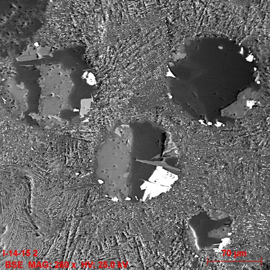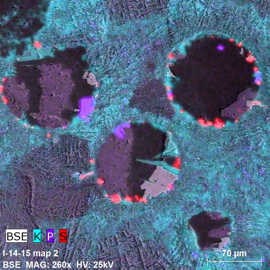Reports: UR854400-UR8: Influence of Anisotropy on Dynamic Rupture During Incipient Fault Zone Development
Joseph L. Allen, Concord University
Purpose of Study. The geometry of faults and their associated damage zones controls fault-rock properties, permeability, and fluid flow. These factors strongly influence their potential as seals or migration pathways in conventional petroleum reservoirs. They also control the strength of basement faults and their potential for reactivation, which can influence reservoir architecture. Faults accumulate displacement at variable rates spanning several orders of magnitude, encompassing a continuum between slow aseismic creep to standard earthquake slip accommodating high-velocity dynamic rupture. A significant component of the accumulated displacement and damage is gained from propagation of the latter; however, little is known of the internal geometry of high-velocity dynamic ruptures within fault zones or what geometric conditions favor their development. The goal of this project is to document the internal structure, kinematics, and dynamics of fault-zone segments that hosted high-velocity dynamic ruptures. We focus on a unique record of rupture recorded by pseudotachylyte (solidified frictional melt) preserved in a fault zone in western Greenland. The ruptures are developed in foliated, high-grade metamorphic rocks that are characteristically layered into 1–10-m-thick bands that emulate the geometry of sedimentary beds. Since pseudotachylyte is the only clear record of high-velocity rupture that is mappable at the fault-system scale, this field site serves as a unique analog for study of rupture propagation in sedimentary strata.
Year 2 Accomplishments. In July and August, 2015 (project year 1), two undergraduates and the PI mapped the southern three of the four fault zones. Our work resulted in development of a new kinematic model for the fault system. These initial results were orally presented by the PI with student coauthors at the October, 2015 Geological Society of America annual meeting in Baltimore, Maryland. During year 2, we utilized the 2015 field data and sample suite to focus on three analytical goals: (1) Digital compilation of geologic mapping, (2) structural analysis of the fault zones, and (3) preparation of samples for geochemical and petrographic analysis. The goal of the work was to characterize the chemistry and deformational environment of fault rocks. Our sample analysis is ongoing and will inform a second field expedition to the fault zone in July and August, 2017.
The two undergraduates who participated in the Greenland field mapping during summer 2015 continued to work on the project during their senior year (project year 2; 2015-16). One student graduated in December, 2015 and has now matriculated to an M.S. program in geophysics at Wright State University. The other student graduated in May, 2016 and has now matriculated to an M.S. program in structural geology at the University of Vermont. He completed a related undergraduate research experience during his senior year and presented the results at an on-campus, undergraduate research symposium as a McNair Scholar (for first-generation/under-represented students), and at the 2015 annual meeting of the Geological Society of America. He coauthored a section of a manuscript currently in preparation, which will report the results of our field data.
This project has resulted in new efforts to upgrade some of our research infrastructure. In fall 2015, we acquired a new sample crusher with funds from the Concord University McNair program. We have also begun to seek external funding to upgrade our micro X-ray fluorescence spectrometer.
Figure 1 (below). Electron microprobe images of pseudotachylyte showing spherical amygdule-like structures in a matrix dominated by dendritic amphibole and plagioclase microlites. Images show maps of backscattered electrons (BSE), and the distribution of K, P, S, Si, Na, and C. Scale bar is 70 microns in all images. The spherical structures may represent an immiscible liquid phase in the frictional melt.














